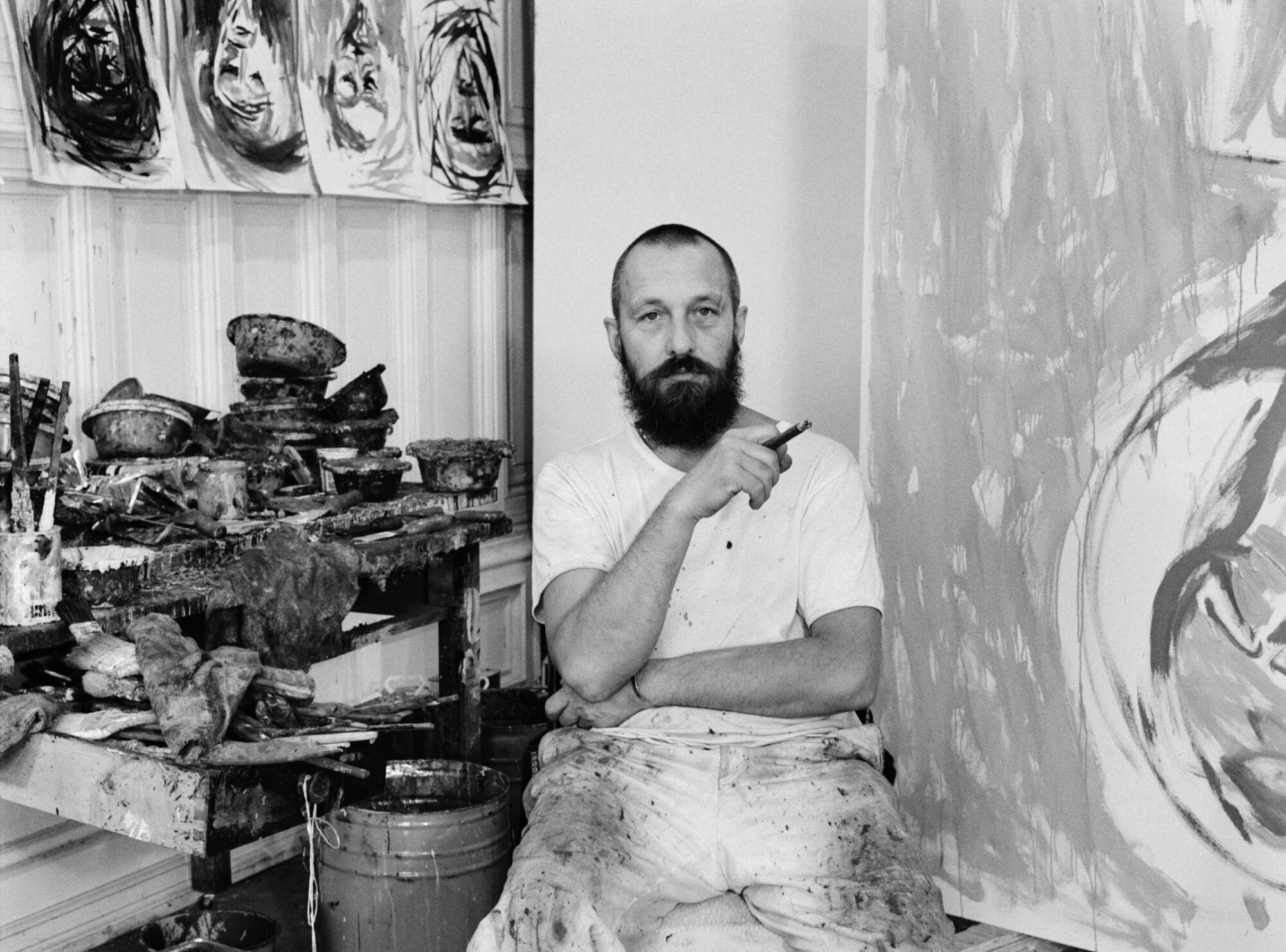
“In his own paintings, Baselitz has attempted to reconcile past and present, beauty and ugliness through the creation of prototypes – ‘motifs,’ as he called them – outside of time.”
Vigorously rendered in earthen tones and layered impasto, Malermund (Painter’s Mouth) testifies to the subversive genius of Georg Baselitz’s fracturing schema as he radically splits the corporeal image of a hulking huntsman. Executed in 1966, the present work is situated at the critical juncture between Baselitz’s famed “Hero” paintings of the previous year and the “Fracture” series that would triumphantly inaugurate a new aesthetic trajectory within his oeuvre. Having relocated that same year to the rural countryside of Germany, Baselitz there developed new painterly archetypes based on the traditional folkloric imagery of woodlands, animals, and huntsmen; operating as personal and shared allegories, these subjects are emblematic of both the artist’s own conflicted sense of national identity and his propensity for the mythological symbolism of the German forest landscape. Malermund (Painter’s Mouth) perfectly exemplifies Baselitz’s brazenly irreverent reinterpretation of the Romanticized German hero; in his lost gaze and dissected anatomy, the figure invokes the uneasy and unresolved disjuncture that characterizes not only the traumatic ravages of World War II, but also the very apogee of Baselitz’s legendary practice.
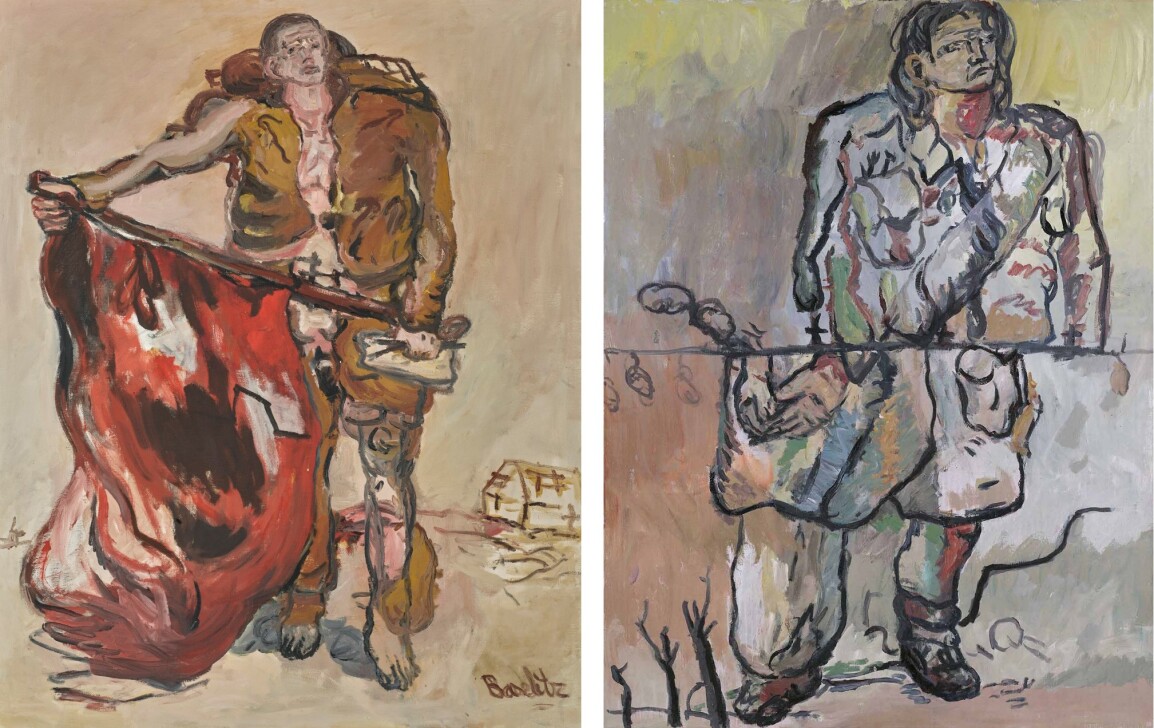
Born in 1938, Baselitz was only seven years old by the end of the Second World War: his conscious inheritance of the haunting devastations and atrocities that marked the histories of a war-torn Germany is most reflected in his poignant statement, “I was born into a destroyed order.” (Georg Baselitz in conversation with Donald Kuspit, ‘Goth to Dance,’ ARTFORUM, 33, Summer 1995, p. 76). Baselitz bore witness to the post-war division of Germany between the West “Federal Republic” and East “Democratic Republic,” which began a historic epoch in which the diametrically opposed ideologies of Western Capitalism and Soviet Communism collided head-to-head. It was in these splintered ruins of Germany that Baselitz forged his artistic identity and aesthetic, manifested viscerally here in the fragmented composition and ruptured figuration of Malermund (Painter’s Mouth).

An early and seminal example of Baselitz’s famed Frakturebilder, the present work sees Baselitz reduce folkloric huntsmen and beasts into abject forms, arresting them in states of anamorphosis constructed through subtle perspectival shifts. Anatomically split across their lower torsos to reveal the wooden floorboards of the domestic interior behind, the man and his hunting dog of the present work are subjected to the painterly ruptures and omissions that shape Baselitz’s radical figural distortion. In the nuanced dialectic between unconventional representational strategies and traditional painterly techniques and subject matter, Baselitz boldly challenges the legibility of the figure by rendering it in decisively dissected form. Caught in the precarious fissures between still-life, landscape, and figuration, Malermund (Painter’s Mouth) witnesses Baselitz’s unique ability to marry discord and equilibrium; as Diane Waldman notes, “In his own paintings, Baselitz has attempted to reconcile past and present, beauty and ugliness through the creation of prototypes – ‘motifs,’ as he called them – outside of time.” (Diane Waldman in Exh. Cat., New York, Solomon R. Guggenheim Museum, Georg Baselitz, 1995, p. 34)
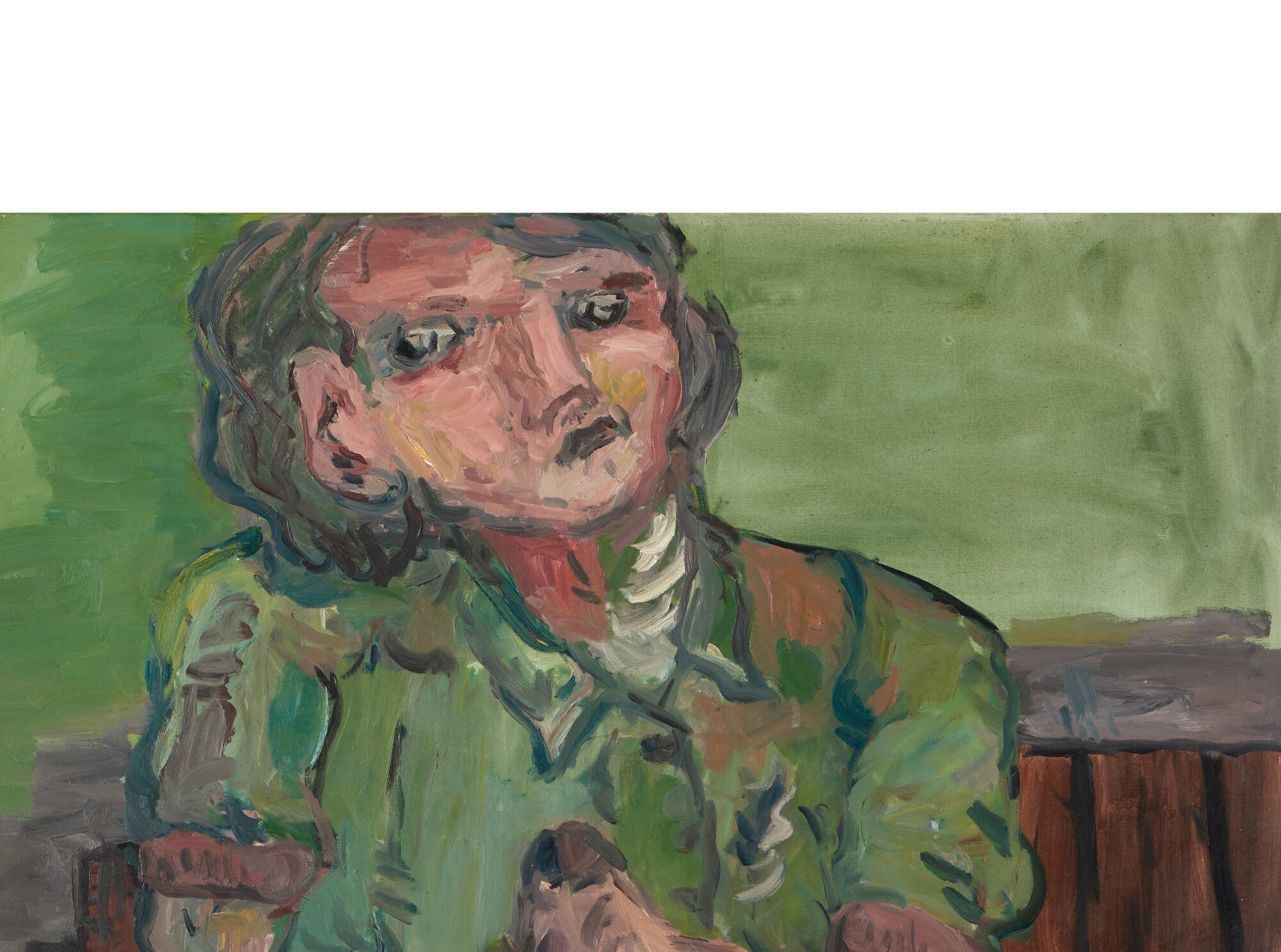
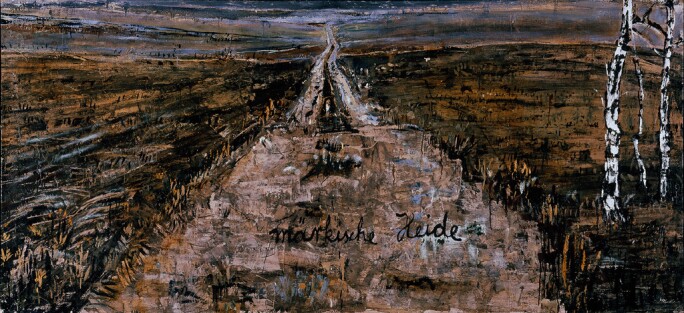
Dating from 1966, Malermund (Painter’s Mouth) emerges from a period of intense creative output when Baselitz moved to the countryside village of Osthofen, where the earthbound tones of his bucolic surroundings would seep into his palette as a layered camouflage of olive green, sienna and mahogany, and grey hues. By framing his paintings in the earthen tones of the forest, Baselitz extends the rich lineage of earlier German painters like Caspar David Friedrich, famed for his paintings of vast woodland landscapes imbued with mythic allure. In the present work, Baselitz’s reinvocation of the folkloric forest scene at once harkens back to Germany’s romantic past while renegotiating man’s relationship to the natural world, now forever scarred by the ravages of war.
"[Baselitz] has striven constantly to confront the realities of history and art history, to make them new and fresh in a manner that can only be described as heroic.”
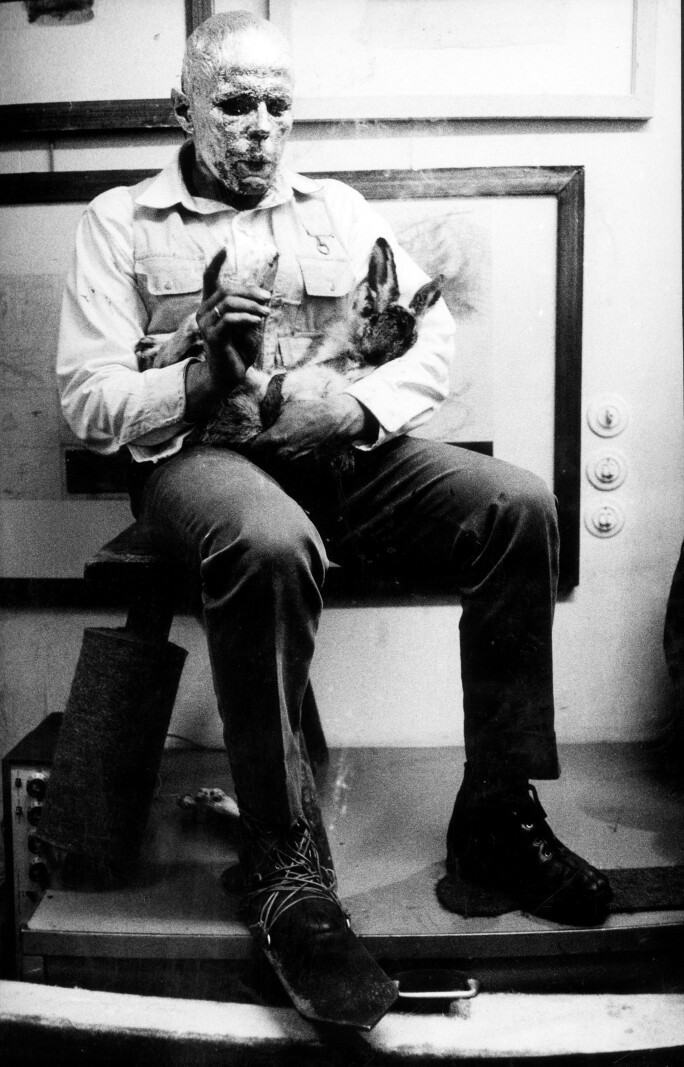
The hyper-articulated and foreshortened forms of the central figure and his animal testify to the additional influence of late sixteenth-century Mannerism on Baselitz—in particular, the distorted anatomies, attenuated limbs, and abbreviated perspectives of such masters as Bronzino, Fiorentino, Pontormo, and Parmigianino, all of whom are cited as influences upon and impetus for artist’s Hero series. By challenging the traditions of Classical art history through the lens of a culture reeling from the psychological and physical devastation of modern warfare, the present work bears witness to Baselitz’s development of a contrarian painterly idiom: one that reassesses modern German values by subverting the formal conventions of canonical painting.
In the affective disquietude of Malermund (Painter’s Mouth), Baselitz deftly reconciles his heightened awareness of the recent past with his astute perception of the immediate repercussions – and trauma – of the contemporary era. Outlined in bold black lines yet rendered in loose gestural brushstrokes, the figure in the present work is strategically crimped and distorted in an almost surgical process to embody the omnipresent metamorphosis undergone by Baselitz’s native homeland. As Norman Rosenthal states, Baselitz “has striven constantly to confront the realities of history and art history, to make them new and fresh in a manner that can only be described as heroic.” (Norman Rosenthal, ‘Why the Painter Georg Baselitz is a Good Painter’ in: Exh. Cat., London, Royal Academy of Arts, Georg Baselitz, 2007, p. 15) The present work evidences Baselitz’s sheer mastery and innovation of an idiosyncratic painterly style, unraveling in a vision that explores the profoundly strange beauty latent within the heart of aesthetic turmoil.

